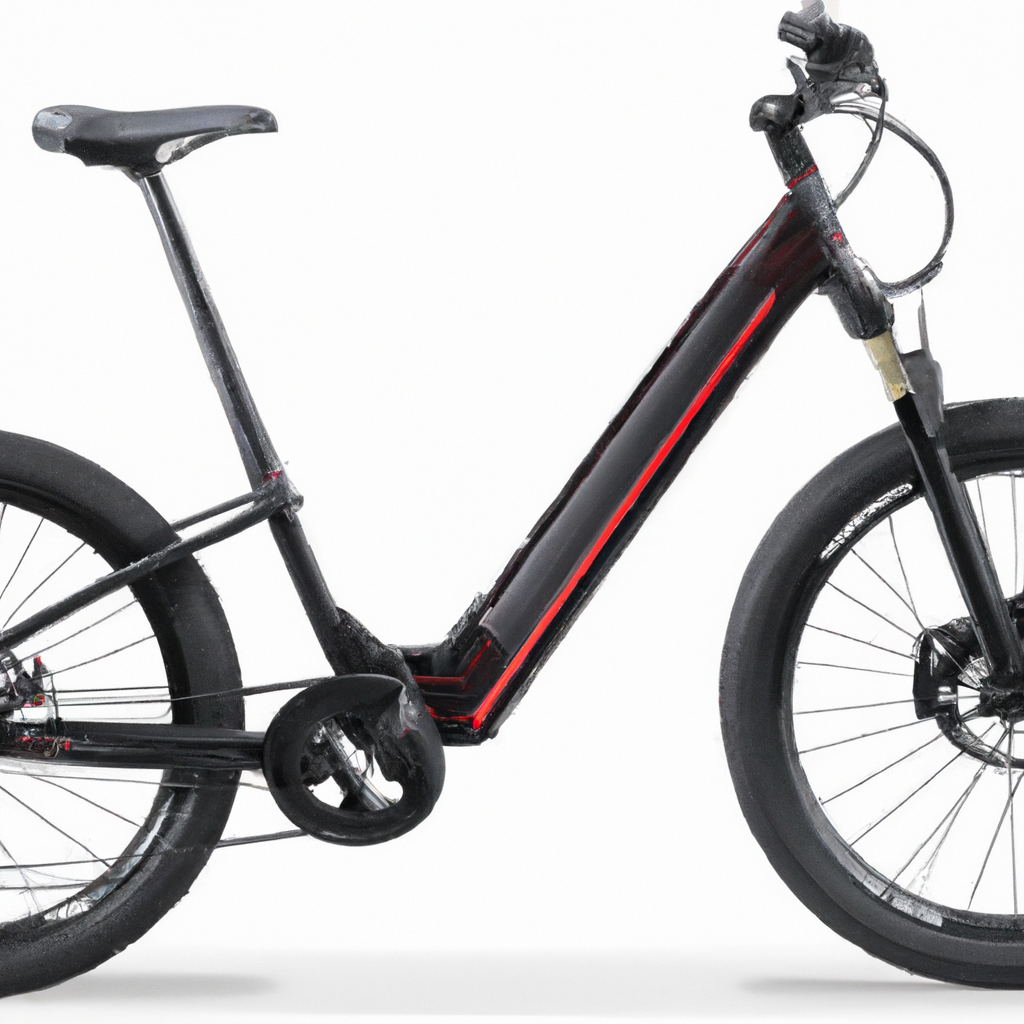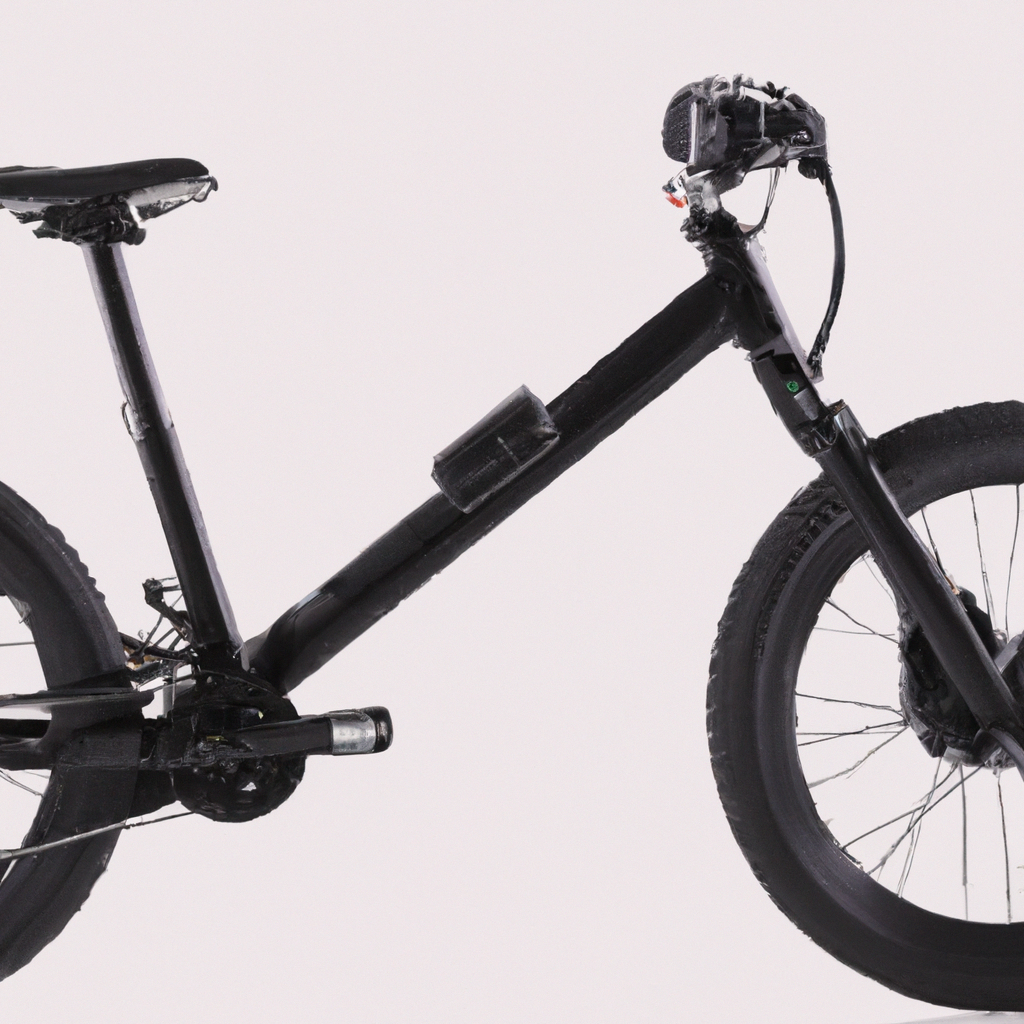If you’re new to the world of electric bikes, you’ve come to the right place. In this Beginner’s Guide, we’ll walk you through the basics of using an e-bike pedal assist. Whether you’re planning to ride in the city or venture off-road, understanding how to effectively utilize pedal assist can greatly enhance your riding experience. From choosing the right assist level to maximizing battery life, this guide will provide you with the essential knowledge to become a confident e-biker. So hop on and let’s get started on this exciting journey!
Understanding Pedal Assist
Pedal assist, also known as pedal-assist or PAS, is a feature commonly found in electric bikes that provides assistance to the rider while pedaling. It is a system that utilizes a sensor to detect pedaling motion and then activates the motor to provide extra power. This technology allows riders to have a more enjoyable and efficient biking experience, as it helps to reduce the effort required to pedal and allows for longer rides with less fatigue.
How does pedal assist work?
Pedal assist works by using a sensor to detect when the rider is pedaling. Once pedaling is detected, the sensor sends a signal to the motor, which then provides an additional boost of power to assist with the pedaling motion. The amount of assistance provided can be adjusted based on the rider’s preference and the terrain. This means that pedal assist can be customized to provide more or less assistance depending on the situation.

Benefits of using pedal assist
There are several benefits to using pedal assist on your electric bike. Firstly, it allows riders to travel longer distances with less physical effort. This is especially beneficial for those who may have limitations or physical conditions that prevent them from exerting too much energy. Pedal assist can also help riders conquer difficult terrains such as hills or steep inclines, allowing them to enjoy biking in areas that would otherwise be challenging. Additionally, using pedal assist can help extend the overall range of your electric bike, as it reduces the strain on the battery and allows for more efficient use of power.
Getting Started with Pedal Assist
Before using the pedal assist feature on your electric bike, it is important to familiarize yourself with the system and understand how to adjust the settings to suit your needs. Here are a few steps to help you get started:
Checking your bike’s pedal assist system
Begin by checking if your electric bike is equipped with a pedal assist system. Look for a control panel or display on your bike’s handlebars that indicates the presence of pedal assist. If you are unsure, consult the user manual or contact the manufacturer for clarification.
Adjusting the pedal assist level
Most electric bikes offer multiple levels of pedal assist that can be adjusted to match your preferred intensity. Use the control panel or display to select the desired pedal assist level. Experiment with different levels to find the one that feels most comfortable and suits your riding style.
Understanding the different pedal assist modes
Some electric bikes may offer different pedal assist modes, such as eco, normal, and sport. Each mode adjusts the level of assistance provided by the motor, allowing you to further customize your riding experience. Take the time to understand the differences between each mode and select the one that best suits your needs.
Activating the pedal assist
Once you have adjusted the pedal assist settings to your liking, it’s time to activate the system. Start pedaling to engage the sensor, which will then signal the motor to provide assistance. You should feel the extra boost of power as you pedal, making your ride smoother and more enjoyable.

Riding with Pedal Assist
Now that you have familiarized yourself with the pedal assist system on your electric bike, it’s time to hit the road and experience the benefits firsthand. Here are some tips to help you make the most of your ride with pedal assist:
Starting with a low pedal assist level
If you are new to using pedal assist, it is recommended to start with a low level of assistance. This will allow you to gradually get accustomed to the feeling of the motor’s assistance without it being too overwhelming. As you become more comfortable, you can increase the level of assistance to match your desired intensity.
Finding the right pedal cadence
When riding with pedal assist, it is important to find a comfortable pedal cadence. This refers to the speed and rhythm at which you pedal. Experiment with different cadences to find the one that feels natural and efficient for you. A higher cadence may provide a smoother and more efficient ride, while a lower cadence may be more suitable for climbing or maintaining control on challenging terrains.
Maintaining a consistent pedal rhythm
To make the most of the pedal assist feature, try to maintain a consistent pedal rhythm. This means keeping a steady pace and avoiding sudden changes in your pedaling motion. Consistency is key to maximizing the efficiency and effectiveness of the pedal assist system.
Controlling your speed with pedal assist
Pedal assist provides extra power to your pedaling, which can result in increased speed. It is important to be mindful of your speed and to ride responsibly, especially in crowded areas or on shared pathways. Use the pedal assist feature responsibly and adjust your speed accordingly to ensure the safety of yourself and others around you.
Using the throttle in conjunction with pedal assist
Some electric bikes may be equipped with a throttle in addition to the pedal assist feature. The throttle allows you to activate the motor without pedaling, providing instant power. It can be used in conjunction with pedal assist to give you an extra boost when needed, such as when starting from a complete stop or climbing a steep incline. Experiment with using the throttle along with pedal assist to find the combination that works best for you.
Managing Battery Life
One of the key considerations when using pedal assist is managing the battery life of your electric bike. Here are some tips to help optimize your battery usage:
Understanding the impact of pedal assist on battery life
Using pedal assist will consume battery power, as it requires the motor to provide extra assistance. The amount of power consumed will depend on various factors, such as the level of assistance selected, the terrain, and the rider’s weight. It is important to be aware of this and to plan your rides accordingly, especially if you are going on long journeys.
Tips for optimizing battery usage with pedal assist
To optimize your battery usage while using pedal assist, consider the following tips:
-
Start with a fully charged battery: Before you begin your ride, make sure your battery is fully charged. This will ensure you have maximum power available.
-
Use lower levels of assistance when possible: Using a lower level of assistance will consume less battery power. Save higher levels of assistance for when you truly need them, such as when climbing steep inclines or battling strong headwinds.
-
Take advantage of regenerative braking: Some electric bikes have regenerative braking capabilities, which means that energy is captured and stored back into the battery when you brake. Utilize this feature whenever possible to help replenish your battery and extend its overall life.
-
Plan your routes strategically: If you know you will be riding in areas with few charging options, plan your routes accordingly. Consider shorter rides or look for places where you can recharge along the way.
Monitoring your battery level while using pedal assist
It is essential to keep an eye on your battery level while using pedal assist. Most electric bikes have a battery indicator on the control panel or display that shows you the remaining power. By regularly checking the battery level, you can gauge how much power you have left and adjust your ride accordingly to conserve energy if necessary.
Conserving battery power on long rides
If you are planning a long ride, conserving battery power becomes even more important. Here are some additional tips to help you make the most of your battery life:
-
Use lower levels of assistance: As mentioned earlier, using lower levels of assistance will help conserve battery power.
-
Pace yourself: Avoid excessive speeding or sudden bursts of acceleration, as these actions can drain the battery faster. Instead, maintain a steady pace and ride at a consistent speed.
-
Take breaks: If your electric bike allows for removable batteries, consider carrying an extra battery with you on long rides. This will allow you to swap out the batteries when needed, extending the overall range of your ride.
By implementing these strategies, you can manage and optimize your battery life while still benefiting from the pedal assist feature on your electric bike.

Climbing with Pedal Assist
One of the significant advantages of using pedal assist on your electric bike is the ability to conquer uphill climbs with greater ease. Here are some tips to help you navigate challenging climbs:
Using a higher pedal assist level for uphill climbs
When faced with uphill climbs, it is recommended to increase the level of pedal assist. This will provide you with more power and help you conquer the incline more easily. Experiment with different levels of assistance to find the one that suits your climbing style.
Finding the right gear combination
To make climbing with pedal assist even more effective, it is important to find the right gear combination. Shift into a lower gear to make pedaling easier and more efficient. This will allow you to take full advantage of the assist provided by the motor and maintain a steady pace while tackling steep inclines.
Maintaining a steady pedal rhythm on steep inclines
When climbing steep inclines with pedal assist, it is crucial to maintain a steady pedal rhythm. Try to keep your pedaling motion smooth and consistent, as sudden changes can result in a loss of momentum and make the climb more challenging. Focus on finding a rhythm that allows you to make the most efficient use of the pedal assist feature.
Using the throttle sparingly on challenging climbs
While the throttle can provide an additional burst of power, it is recommended to use it sparingly on challenging climbs. The throttle can drain the battery quickly, so it is best to rely on the pedal assist feature and your own pedaling efforts for the majority of the climb. Use the throttle as a complement to pedal assist when you need an extra boost, such as when starting from a complete stop or overcoming particularly steep sections of the climb.
Descending with Pedal Assist
When it comes to descending with pedal assist, it is important to adjust your settings to ensure a safe and controlled ride. Here’s what you need to know:
Lowering the pedal assist level for downhill descents
As you start descending, it is recommended to lower the level of pedal assist. This will reduce the risk of accelerating too quickly and losing control of your electric bike. Decreasing the level of assistance will allow you to have a more controlled descent and maintain a comfortable speed.
Braking techniques while using pedal assist
When descending with pedal assist, it is important to use your brakes in conjunction with the assist. Use your brakes to control your speed and regulate your descent, especially on steeper sections. It is crucial to avoid relying solely on the pedal assist feature for braking, as it may result in a loss of control or excessive speed.
Maintaining control and stability on steep descents
Maintaining control and stability while descending with pedal assist is paramount. To ensure a safe and comfortable ride, follow these tips:
-
Keep your weight centered and balanced: Position your body in a neutral position with your weight evenly distributed over the bike. This will help you maintain control and stability as you navigate the descent.
-
Keep your hands on the brakes: Keep your fingers on the brake levers at all times, ready to apply them when necessary. This will allow you to react quickly to any unexpected obstacles or changes in the terrain.
-
Look ahead: Focus your gaze a few meters in front of you to anticipate any upcoming obstacles or changes in the terrain. This will allow you to adjust your speed and position accordingly.
-
Relax and stay loose: Maintain a relaxed grip on the handlebars and avoid tensing up. This will help you absorb any bumps or vibrations and maintain control over your electric bike.
By following these guidelines, you can descend with confidence and enjoy a safe and controlled ride with pedal assist.

Navigating Turns and Corners
When navigating turns and corners with pedal assist, there are a few key considerations to keep in mind to ensure a smooth and controlled ride. Here’s what you need to know:
Adjusting the pedal assist level for turns
When approaching turns or corners, it is recommended to adjust the level of pedal assist accordingly. Lower the level of assistance to reduce the risk of accelerating too quickly or losing control of your electric bike. Having a lower level of assistance will allow you to have better control over your speed and maneuvering.
Leaning into the turns with pedal assist
To navigate turns and corners effectively, it is important to lean into the turn and shift your body weight accordingly. This will help you maintain balance and control over your electric bike. As you lean into the turn, remember to keep a consistent pedal rhythm to ensure a smooth and steady ride.
Maintaining a balanced posture while cornering
Maintaining a balanced posture is crucial when navigating turns and corners with pedal assist. Keep your body centered and your weight evenly distributed over your electric bike. Avoid leaning too far to one side or shifting your weight too abruptly, as this can impact your stability and control. By maintaining a balanced posture, you can confidently navigate turns and corners with ease.
Safety Precautions
When riding an electric bike with pedal assist, it is important to prioritize safety. Here are some key safety precautions to keep in mind:
Wearing proper safety gear
Always wear appropriate safety gear when riding your electric bike, regardless of whether you are using pedal assist or not. This includes a helmet, reflective clothing, and sturdy footwear. Additionally, consider wearing elbow and knee pads for added protection, especially when riding in challenging terrains or at higher speeds.
Understanding your e-bike’s capabilities and limitations
It is important to have a clear understanding of your electric bike’s capabilities and limitations. Familiarize yourself with the specifications and recommended usage guidelines provided by the manufacturer. This will help you ride within safe limits and avoid pushing your bike beyond its capabilities.
Being aware of traffic rules and regulations
When riding with pedal assist, it is essential to adhere to traffic rules and regulations. Obey all traffic signals, signs, and guidelines applicable to cyclists. Additionally, be mindful of pedestrians, other cyclists, and vehicles sharing the road, and always prioritize the safety of yourself and others.
Practicing defensive riding techniques
When riding with pedal assist, it is crucial to practice defensive riding techniques to ensure your safety. This includes being aware of your surroundings, anticipating potential hazards or obstacles, and making yourself visible to others. Maintain a safe distance from other vehicles, use hand signals to indicate your intentions, and remain vigilant at all times.
By following these safety precautions, you can enjoy the benefits of riding with pedal assist while minimizing the risk of accidents or injuries.

Maintaining Your E-Bike
Proper maintenance is essential to ensure the longevity and optimal performance of your electric bike. Here are some maintenance tips specific to the pedal assist system:
Cleaning and lubricating the drivetrain
Regularly cleaning and lubricating the drivetrain is essential for maintaining the smooth operation of the pedal assist system. Use a gentle degreaser and a brush to clean the chain, cassette, and derailleur. After cleaning, apply a quality bicycle lubricant to the chain to reduce friction and ensure smooth pedaling.
Inspecting the pedal assist system regularly
Inspect the pedal assist system regularly for any signs of wear or damage. Check the sensors, wiring, and connections to ensure they are in good condition and properly secured. If you notice any issues, such as a loss of power or malfunctioning sensors, contact your electric bike dealer or a professional technician for assistance.
Charging and storing the battery properly
Properly charging and storing the battery is crucial for maintaining its lifespan and performance. Follow the manufacturer’s instructions for charging, and avoid overcharging or undercharging the battery. When storing your electric bike for an extended period, remove the battery and store it in a cool, dry place to prevent deterioration.
Routine maintenance checks
In addition to specific pedal assist maintenance, it is important to perform routine maintenance checks on your electric bike. This includes inspecting the tires for wear and proper inflation, checking the brakes for proper functioning, and ensuring that all bolts and fasteners are tightened securely. Regularly clean and inspect other components, such as the frame and fork, to identify any signs of wear or damage.
By incorporating these maintenance practices into your routine, you can ensure the optimal performance and longevity of your electric bike’s pedal assist system.
Conclusion
Pedal assist is a valuable feature that can greatly enhance your electric biking experience. By understanding how pedal assist works and utilizing it effectively, you can enjoy longer rides, conquer challenging terrains, and maximize the efficiency of your electric bike. Remember to adjust the settings to match your riding style, practice safe riding techniques, and maintain your e-bike regularly to ensure a smooth and enjoyable pedal-assisted journey. With practice and experience, you will become a confident and skilled e-biker, making the most of your electric bike’s pedal assist capabilities.




